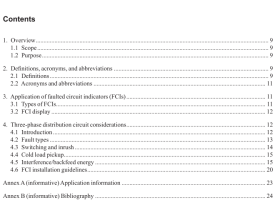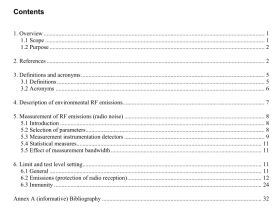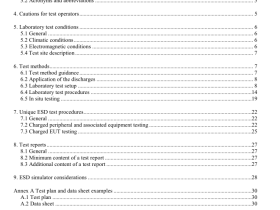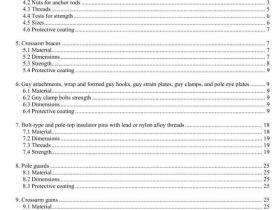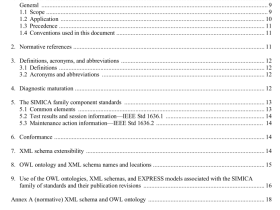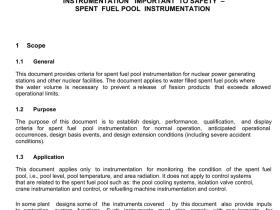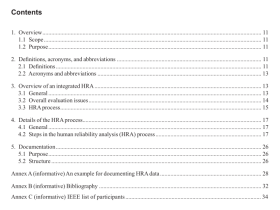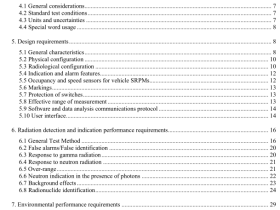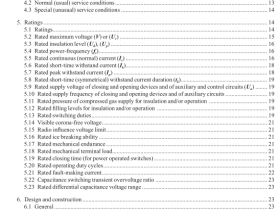IEEE N42.34 pdf download
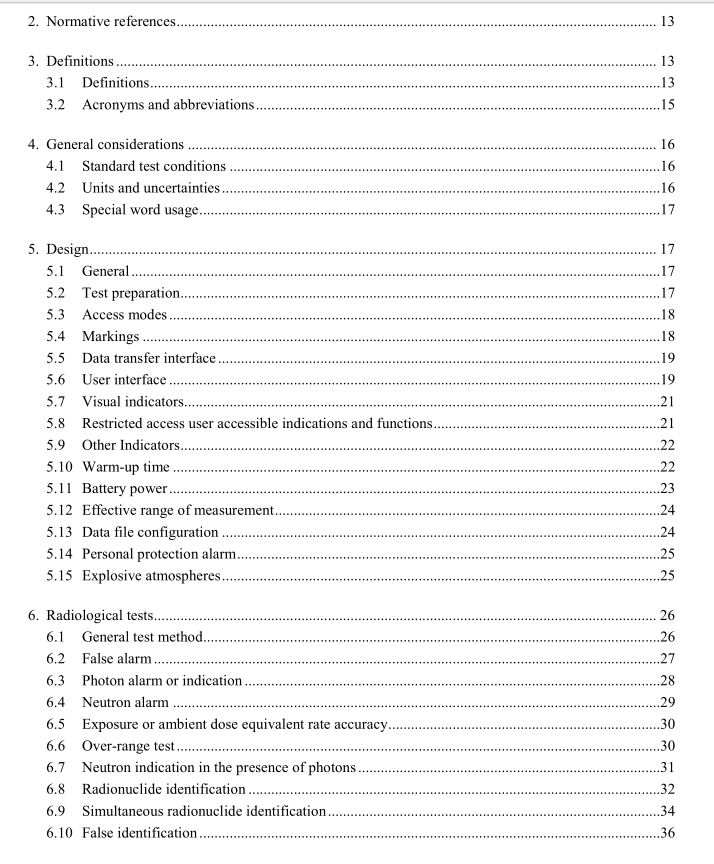
IEEE N42.34 pdf download American National Standard Performance Criteria for Handheld Instruments for the Detection and Identification of Radionuclides
alarm: An audible, visual, or other signal activated when the instrument reading or response exceeds a presetvalue or falls outside of a preset range.
calibrate: To adjust andor determine the response or reading of a device relative to a series of conventionallytrue values.
calibration: A set of operations under specified conditions that establishes the relationship between valuesindicated by a measuring instrument or measuring system, and the conventionally true values of the quantityor variable being measured.
coefficient of variation(COV) (%):The square root of the variance, s* , divided by the mean value of “n”number of readings times 100.
confidence indication: An indication provided by the instrument of the reliability assigned to the determinedidentification.
conventionally true value (CTV): The commonly accepted best estimate of the value of that quantity.
NOTE—The CTV and the associated uncertainty will preferably be determined by a national or transfer standard, or by areference instrument that has been calibrated against a national or transfer standard, or by a measurement quality assurance(MQA) interaction with the National Institute of Standards and Technology (NIST) or an accredited calibration laboratory.(See ANSI N42.22 and ANSI N42.23.)
detection limits: The extremes of detection or quantification for the radiation of interest.
NOTE—The lower detection limit is the minimum statistically quantifiable instrument response or reading. The upperdetection limit is the maximum level at which the instrument meets the required accuracy.
detector: A device or component designed to produce a quantifiable response to ionizing radiation normallymeasured electronically.
effective range of measurement: Range of measurements within which the requirements of this standardare met.
exposure rate: The measure of ionization produced in air by x-ray or gamma-ray radiation.NOTE—The unit of exposure rate is the Roentgen per hour, abbreviated in this standard as R/h.
false alarm: An indication of the presence of a radioactive source or increase in the measured radiationlevel when that radioactive source or increase is not present.
false identification: An identification attributed to a radionuclide that is not present.
indication: Displayed signal from the instrument to the user conveying information such as scale or decade,status, malfunction, or other critical information.
influence quantity: Quantity that may have a bearing on the result of a measurement without being thesubject of the measurement, such as temperature and humidity.
instrument: A complete system consisting of one or more assemblics designed to quantify one or morecharacteristics of ionizing radiation or radioactive material.
range: All values lying between the lower and upper detection limits.
readout: The portion of the instrument that provides a visual display of the response of the instrument orthe displayed value, with units,displayed andor recorded by the instrument as a result of the instrument’sresponse to quantity being measured.
reference point: Physical mark, or marks, on the outside of an instrument used to position it at a point wherethe conventionally true value of a quantity is to be measured, unless the position is clearly identifiable fromthe construction of the instrument.
response: Ratio of the instrument reading to the conventionally true value of the measured quantity.
restricted mode: An advanced operating mode that can be accessed by an expert user (i.e., via password) tocontrol the parameters that can affect the result of a measurement (i.e., radionuclide library, routine functioncontrol, calibration parameters, alarm thresholds).
NOTE—This mode may also be called the “”advanced” or “expert” mode.
routine mode: An access mode that enables the user to perform detection and identification of radionuclides,measure exposure or dose equivalent rate, and if applicable, detect the presence of neutrons.
standard deviation: The positive square root of the variance.
standard test conditions: The range of values of a set of influence quantities under which a calibration ora measurement of response is carried out.
test: A procedure whereby the instrument, circuit, or component is evaluated.
type test: Initial test of two or more production instruments made to a specific design to show that thedesign meets defined specifications.
uncertainty: The estimated bounds of the deviation from the conventionally true value,generally expressedas a percent of the mean,ordinarily taken as the square root of the sum of the square of two components:l1) random errors that are evaluated by statistical means and 2) systematic errors that are evaluated by othermeans.
user interface: The features of the radionuclide identification device (RID) with which the user interacts(e.g., controls, displays).
